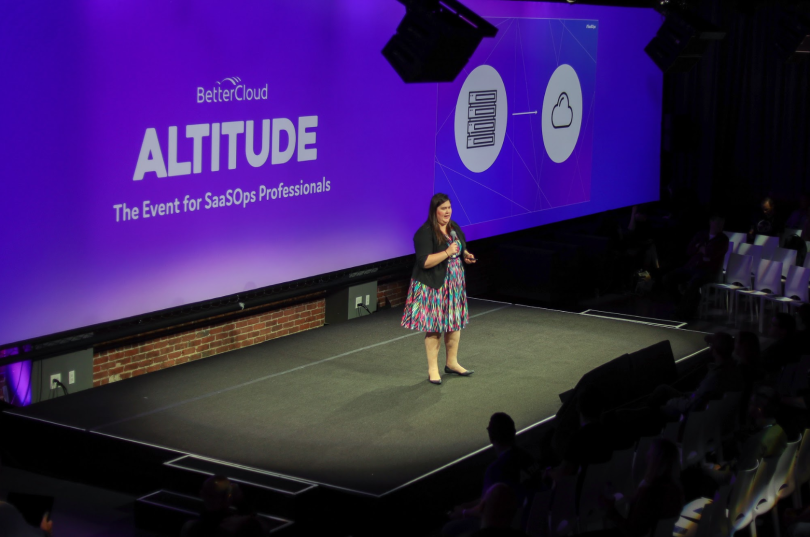What might be a particular pain point for a company’s customer success team probably won’t be an issue two or three years down the line.
So, as a company evolves, shouldn’t the KPIs of its customer success team follow?
Three New York City-based customer success managers recently told Built In NYC that they use trackable, holistic statistics to tailor both their offerings and KPIs to each client. For example, the customer success team at event planning platform Bizzabo measures “return on event” as it relates to a client’s bottom line, rather than ROI per marketing conference or its social impact summit alone.
For more on the evolution of certain churn, adoption and engagement barometers, read on.

Until recently, BetterCloud Customer Success Executive Fran Slattery said that her team was using a single customer satisfaction question to measure how well their services matched consumer demand. Under the company’s new chief customer officer’s leadership, they now employ a net promoter score survey, which Slattery said helps the entire team better understand how their clients view their varying service offerings and product components. But the iteration isn’t ending there.
What does success look like for one of your customers?
Our clients consider us partners rather than vendors. In such a partnership, both organizations should receive and invest equal value –– especially when it comes to commercial terms or people and resource allocation.
We’re both willing to advocate for each other at the organizational level through case studies or reference calls. At a personal level, we participate in 360-degree feedback reviews for end-of-year performance evaluations.
Our organization can clearly articulate why a client chose our solution. We can map our product or solution to specific internal business initiatives. And the client can speak to our value propositions.
We value product adoption, support tickets and feature requests, communication cadence and executive engagement.’’
What specific metrics does your CS team use to measure this success?
We value product adoption, support tickets and feature requests, communication cadence and executive engagement. As CSMs, we need to ensure each of our platform user’s activities aligns with our executive team’s goals (and help broker the conversation when there is a disconnect).
While we try to understand how product adoption increases across the platform, I focus on the features that most directly impact the business objectives the client is trying to solve.

In the early days of Bizzabo, Director of Customer Success Hunter Paul carefully tracked how well single events on the platform were executed. The company has since turned its focus to how such events improve a client’s overall bottom line. Paul told us more about why his team has taken that approach and what it has meant to the businesses they work with.
Tell us what success looks like for one of your customers. What specific metrics does your CS team use to measure this success?
Bizzabo helps companies streamline event management while maximizing attendee experience. Due to the nature of professional events, each customer has their own goals and event strategy. So success really looks different for each one. Once we’ve thoroughly discussed the customer’s intended return on event (ROE), we customize our partnership to help them hit the metrics they’ve shared while ensuring they are implementing industry best practices.
In addition to leveraging the customer’s specific ROE metrics, we’ve created a robust tool that measures our customers’ product usage across our entire platform. This tool allows us to highlight areas of our platform that the customer is using most successfully. It also illuminates areas where the customer may need additional resources to decrease the consumption gap.
We’ve created a robust tool that measures our customers’ product usage across our entire platform.’’
What’s one metric you didn’t use to track but do now? What prompted your team to start tracking this?
We initially focused much more on measuring the success of a single event or event series. While those metrics are certainly important to us and our customers, we have grown to a point where we can provide a much more valuable metric of how the ROE affects the bottom line for our customers’ entire organization. We made this crucial change in measuring the massive value Bizzabo brings to our customers in order to identify the holistic impact we have across their whole company.

Monday.com’s online platform allows full teams to collaborate on projects and track their progress — but it only works if everyone involved actually uses it. That’s one of CSM Trey Praytor’s biggest pain points. So he and his colleagues track the number of “empty seats” per account to get an idea of which users they should be focusing on most.
First, tell us what success looks like for one of your customers. What specific metrics does your CS team use to measure this success and why?
While we track product adoption for every client (percentage of users logging in each week and volume of activity in the account), the metrics that signal success for each client are unique to them. During onboarding, we look to uncover their desired outcomes. From there, we partner with them to make progress toward those specific goals.
The metrics that signal success for each client are unique to them.’’
What’s one metric you didn’t use to track but do now? What prompted your team to start tracking this?
Empty seats. A teammate of mine, Gilad, made a great case for why this is important to track. When working with several hundred users in an account, the administrative cost of processing a new invoice each time a user or two joins is not sustainable. So, we have clients purchase buckets of seats at a time. Naturally, there will be seats that haven’t been filled yet.
Maybe new team leads are stuck in the initial building stage and haven’t made the jump to invite their whole team to join our platform. Maybe everyone who wants the tool doesn’t know it’s available. Or maybe the value of monday.com hasn’t been fully conveyed. In that case, new users may have been invited but haven’t taken that crucial first step of logging in. All of those scenarios are red flags for us. They’re a sign that it’s time to dive in a little deeper to understand more.






